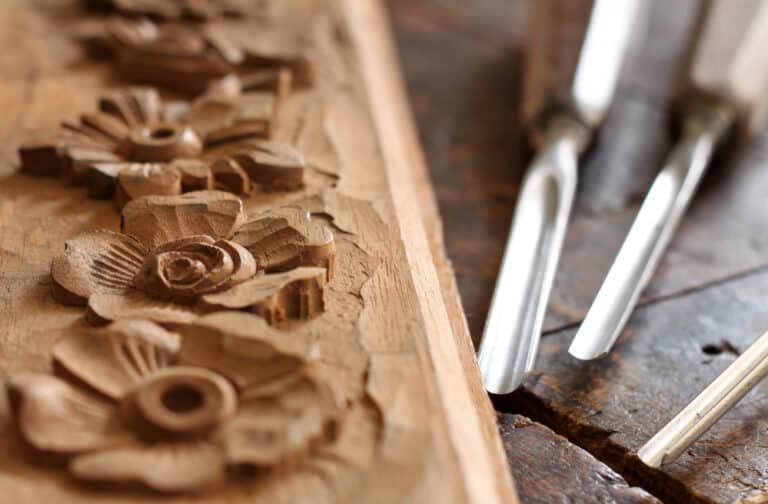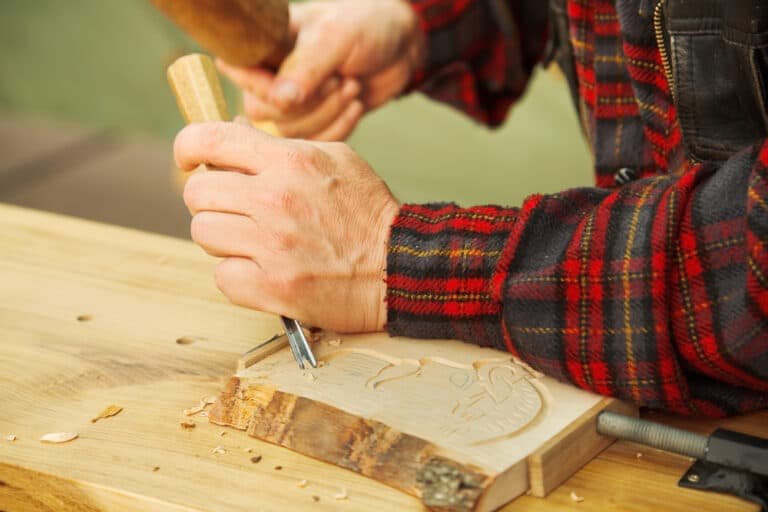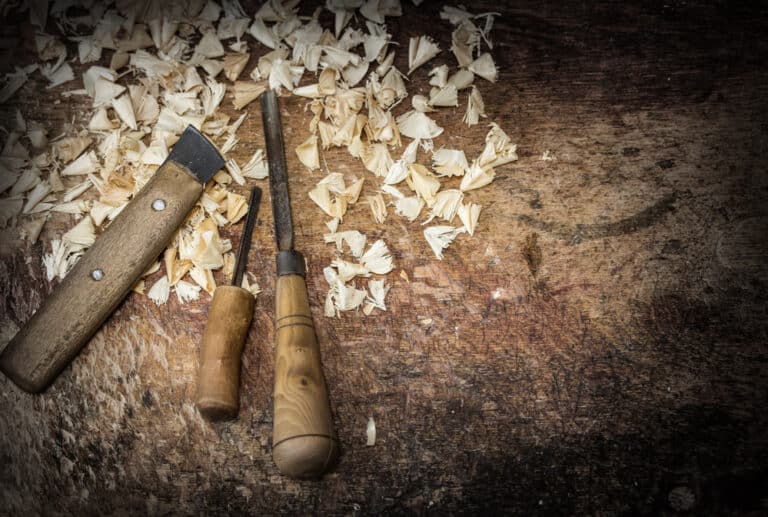You can glue wood together for wood carving. If you are gluing two blocks together, use strong wood glue. Wood glue can actually be stronger than the wood itself and will hold up fine to any carving. Here’s a video illustrating that point:
Some people will tell you to grease the sides before you glue them together. Don’t do this! If you do, your glue won’t stick. All you need to do is clean and dry both sides of the wood. If the wood is dirty or has residue from a previous finish, lightly sand it with fine-grit sandpaper.
How to glue two pieces of wood together
Materials Needed:
- Two blocks of wood
- Wood glue (PVA glue)
- Clamps
- A clean, flat surface
- A damp cloth
- Sandpaper (optional)
Step 1: Prepare the Wood
- Ensure that the surfaces of the wood blocks that you are going to glue together are clean, dry, and free from any dust or debris.
- If the surfaces are not flat or have any old glue residue, use sandpaper to smooth them out.
Step 2: Apply the Wood Glue
- Open the wood glue and apply a thin, even layer onto one of the wood surfaces.
- You don’t need to apply glue to both surfaces; one is sufficient.
- Make sure to cover the entire surface, but avoid applying too much glue. Excess glue can squeeze out when you clamp the pieces together and create a mess.
Step 3: Join the Wood Blocks
- Press the two blocks of wood together, aligning them as precisely as possible.
- Make sure to do this quickly as wood glue starts to set in a few minutes.
Step 4: Clamp the Wood Blocks
- Use clamps to hold the two pieces of wood together tightly.
- Make sure the clamps are evenly spaced and apply pressure evenly across the surface.
- Wipe away any excess glue that squeezes out of the joint with a damp cloth.
Step 5: Let the Glue Dry
- Leave the clamped wood to dry for the amount of time recommended by the glue manufacturer. This is usually around 24 hours.
- Do not disturb the wood during this time to ensure a strong bond is formed.
Step 6: Remove the Clamps and Finish
- After the glue has dried completely, remove the clamps.
- If there is any glue residue on the wood, you can remove it with a chisel or sandpaper.
- Your wood blocks are now successfully glued together!
Tips:
- If you’re gluing large pieces of wood, you might need to use more clamps to ensure even pressure across the entire joint.
- Always follow the manufacturer’s instructions on the glue bottle for the best results.


